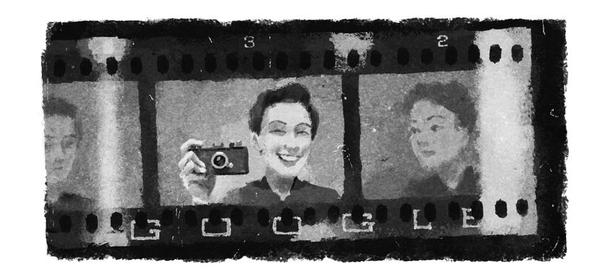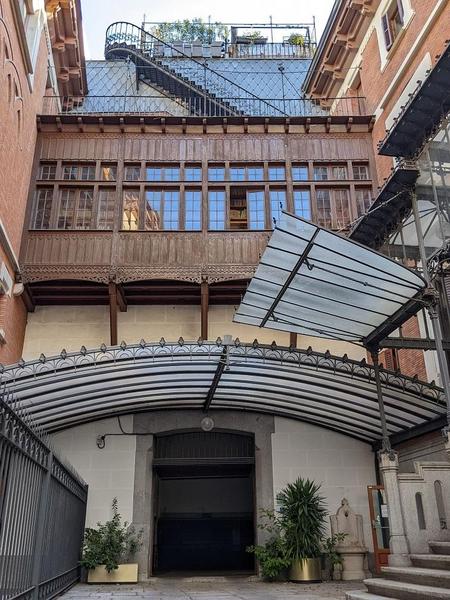January 27, 2023 Hello , There's a new book out featuring one of my favorite historical women, Gerda Taro. I've written about her before, telling you about her incredible courage and how she believed photographs could change the world. In the mid-1930s, Gerda Taro
served as a midwife of sorts, helping birth the powerful force of modern photojournalism. The new book is historical fiction based on Gerda's life. One Last Shot is a novel written in verse by Author Kip Wilson.
I was immediately
drawn to Kip because she has also written a book based on the life of Sophie Scholl, another young woman I've written you about and
admired since I was 12 years old. So it is with great pleasure that I welcome Author Kip Wilson to tell you about her new book and her journey writing it. (All the way
to the fields of the Spanish Civil War)
Author Kip Wilson writes...
I
first learned about Gerda Taro from the Google Doodle on her birthday on August 1, 2018. Although I’ve been an amateur photographer and photography fan since high school, I’d never heard of this impish-looking girl holding the camera in the Doodle. I clicked it right away. Google Doodle from 8/1/2018
As soon as I learned that Gerda Taro was a foreign photojournalist who covered the Spanish Civil War, I was more than hooked. I’m married to a Spaniard and have been slowly learning about this turbulent time in history since I first visited the country over twenty years ago, but as a writer of YA historical fiction, I hadn’t yet found quite the right angle to investigate.
The more I learned about Gerda, the more I loved her: her profoundly anti-fascist views, her multilingual and photography skills, her charm, her unrivaled confidence, and her perfectly balanced combination of femininity and toughness. The details I learned brought her to life for me as a YA heroine. Definitely someone I wanted to spend time with! My family and I travel to Spain every couple of years, so I went ahead and booked flights and an apartment for the summer of 2020 to combine visits to relatives with some
on-the-ground research. Then COVID hit. Obviously, I had to cancel those plans, and my in-person research became armchair research. Author Kip Wilson, Photo Credit © Rosanne Samson
At this
point, I continued by focusing on available electronic resources, including newspapers from the era I was able to access in German, Spanish, and French, as well as additional videos and documents I could find online. I also contacted several authors who’d written about Gerda Taro with some specific questions, which they kindly answered for me, helping me form a clearer picture of some of the key moments and relationships in her life. It was starting to come together! But there’s still something amazing about getting to experience an important historical place in person, and luckily I did finally manage to visit Spain again in 2022. I’d made
contact with several Spanish Civil War experts in the area, and we made plans to visit some key sites together during my stay. In Madrid, historian Almudena Cros and I
spent a morning visiting everywhere from the University City where fierce fighting took place in 1936 to the palace that housed the Alianza de Escritores Antifascistas—Gerda Taro’s home base in the city. Former home of the Alianza, photo courtesy Kip Wilson
West of Madrid, Alan Warren—an expert on the International Brigades—brought me to the museum of La Mujer en la Guerra Civil in Navalgamella, where they have an amazing life-size portrait of
Gerda Taro, along with plenty of other works of art, uniforms, etc.
La mujer en la guerra civil, photo courtesy Alan Warren
We also got together with some other local historians and visited the roadside site where Gerda was run over by a tank during the Battle of Brunete. In the midst of a heat wave a few weeks later—on the 85th anniversary of Gerda Taro’s death—we went back to the same spot and planted some lavender in Gerda’s honor beside the tree that marks the site. It was an incredibly moving day. Alan read from Robert Capa’s Death in the Making, the book Robert put together in Gerda’s honor, and I read from One Last Shot. Kip Wilson at the
Brunette battlefield, photo couresy Alicia García López
Out there baking under the heat of the Spanish sun, I couldn’t help thinking of the teen readers who’d soon be holding a copy of my book and learning about Gerda
Taro and the impact she made with her photographs, her passion, and her determination to make a difference. For my early research, I began reading all the books about her I could get my hands on. I began with Eyes of the World: Robert Capa, Gerda Taro, and the Invention of Modern Photojournalism by Marc Aronson and Marina Budhos, a fabulous nonfiction book for young adults. I also read two incredible biographies, Gerta Taro: Fotoreporterin im spanischen Bürgerkrieg (in German) by Irme Schaber, and Gerda Taro: Inventing Robert Capa by Jane Rogoyska. Both of these filled in a lot of blanks for me. I, of course, also studied the incredible photographs Gerda Taro herself shot, many of which are available at
the International Center of Photography, as well as photographs of Gerda, which likewise reveal a lot about her character. Gerda Taro at work
But it was definitely challenging researching someone less well known than the subject of my first book, White Rose, about World War II German resistance member Sophie Scholl. In Sophie’s case, there are plenty of primary source documents as well as books and interviews available, including quite a few that had been translated in English. Not so
with Gerda, whose work had been largely forgotten until the discovery of the so-called “Mexican Suitcase” in 2007. The Mexican Suitcase is an excellent documentary film from 2011 directed by Trisha Ziff that explains how the rolls of over 400 negatives in the three boxes that became collectively known as the “Mexican Suitcase” made their way from Spain to Mexico and eventually to the International Center of Photography in New York,
founded by Robert Capa’s brother Cornell. Most interesting of all to me was how experts were able to identify and attribute work of each of the three photographers in the “suitcase” (Gerda, Robert, and their friend David Seymour, known as Chim). By the time I’d seen the film, I’d already read all the books I could track down, including not only ones about Gerda, but also several about Robert Capa. I had enough information
to complete my first draft of the manuscript, so I was ready to get up close with some of the key historical sites—to really follow Gerda’s footsteps.
I’m
personally drawn to the history and the subjects I study, but in the end, the reason I write what I do is for today’s readers. I choose subjects and time periods that I think young people today will find relevant—which hopefully means that they not only learn about this important history, but also that they can take something from it to apply to their own lives. I hope readers will see that Gerda Taro was not only a bright spark back in her own day, but also an inspiration for generations to
come.
Like my article today? Please share:
Headliners will be Pulitzer winning writers William Finnegan, Anthony Doerr, Maria Hinojosa and N. Scott Momaday. Me, (alas, not a headliner) will be Tuesday, February 21, 2023, at
4:30pm (Pacific)
Follow me on social media
Read a great book? Have a burning question? Let me know. If you know someone who might enjoy my newsletter or books, please forward this
e-mail. I will never spam you or sell your email address, you can unsubscribe anytime at the link below. To find out more about my books, how I help
students, teachers, librarians and writers visit my website at www.MaryCronkFarrell.com. Contact me at MaryCronkFarrell@gmail.com. Click here to subscribe to this
newsletter. |
|
|








